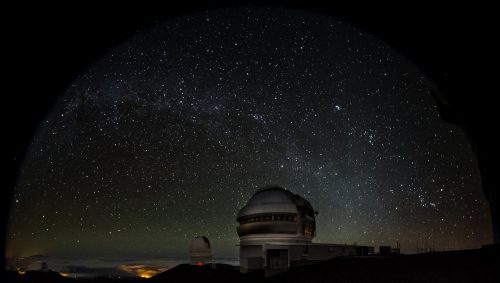- Date: 19 May 2017
- Comments: (0)
- Categories: For Astronomers, For Everyone
Celebrate the Large and Long Program! is a series of blog posts which showcase the high-impact science under the Large and Long Program of Gemini Observatory.
What is the Large and Long Program?
The Large and Long Program (LLP) is one of five observing modes Gemini offers to users of our telescopes. These five modes categorize projects based on length and weather conditions required for the observations. Classically, Gemini accepts proposals on a six month basis and recipients awarded with observing time complete their observations within that given semester. Large and Long Programs, on the other hand, provide more flexibility for long term research and last anywhere from one to three years. This extended time frame promotes collaboration across communities and produces significant and high-impact science. Here, we ask past and present Large and Long Programs to share a little about their research and experience with Gemini Observatory.
Colours of the Outer Solar System Origins Survey (Col-OSSOS)

The Gemini North telescope (foreground, right) with the Canada-France-Hawaii Telescope in background (left). Image obtained during observations for Col-OSSOS and both telescopes are pointing at the same target.Credit: Gemini Observatory/AURA, photo by Joy Pollard.
1. Principal Investigator: Name and Affiliation?
Wes Fraser. Astrophysics Research Centre. Queen’s University, Belfast
2. How would you describe your Large and Long Program?
The Col-OSSOS program (Colours of the Outer Solar System Origins Survey) is designed to gather surface colours of roughly 120 Kuiper Belt Objects using both the Gemini North and Canada-France-Hawaiʻi telescopes, simultaneously. This use of dual telescopes enables us to gather observations in the ultraviolet, visible, and near-infrared. With these observations we will be able to determine each object’s compositional class. The ultimate goal is to produce the first ever quantitative compositional-dynamical map of the outer Solar System, with the aim of identifying key hallmarks of certain features of Neptune’s migration, including blue interlopers in the cold classical region, or an abundance of low inclination, red objects in the 2:1 resonance that have been swept up from the cold classical region.
3. Why is Gemini best suited for this research?
Gemini is one of the few telescopes in the world that has the large aperture, excellent location, and most importantly, the necessary imaging cameras covering the wavelength range we need and the ability to rapidly switch back and forth between those cameras. No other telescope in the world possesses that particular killer combination, making the Gemini telescopes, and in particular, Gemini North, the only tool for the job.
4. What has been the best part of your experience with the Large and Long Program?
Getting to know the telescope staff and the telescope itself is the best part. Each observatory has a personality. Knowing that personality is the best way to maximize personal use of the telescope. A really big part of that is getting to know the staff, which is very difficult when operating remotely, or in queue fashion. The Large and Long Programs have given me the opportunity to shake hands with all the staff that operate this telescope.





